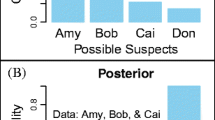Abstract
There are several different topics that can be addressed with multivariate failure time regression data. Data analysis methods are needed that are suited to each such topic. Specifically, marginal hazard rate models are well suited to the analysis of exposures or treatments in relation to individual failure time outcomes, when failure time dependencies are themselves of little or no interest. On the other hand semiparametric copula models are well suited to analyses where interest focuses primarily on the magnitude of dependencies between failure times. These models overlap with frailty models, that seem best suited to exploring the details of failure time clustering. Recently proposed multivariate marginal hazard methods, on the other hand, are well suited to the exploration of exposures or treatments in relation to single, pairwise, and higher dimensional hazard rates. Here these methods will be briefly described, and the final method will be illustrated using the Women’s Health Initiative hormone therapy trial data.
Similar content being viewed by others
References
Aalen OO, Cook RJ, Røysland K (2015) Does Cox analysis of a randomized survival study yield a causal treatment effect? Lifetime Data Anal 21(4):579–593
Andersen PK, Gill RD (1982) Cox’s regression model for counting processes: A large sample study. The Annals of Stat 10(4):1100–1120
Clayton DG (1978) Model for association in bivariate life tables and its application in epidemiological studies of familial tendency in chronic disease incidence. Biom 65:141–151
Clegg LX, Cai J, Sen PK (1999) A marginal mixed baseline hazards model for multivariate failure time data. Biom 55(3):805–812
Cox DR (1972) Regression models and life-tables (with discussion). J of the Royal Statistical Soc Ser B (Methodological) 34(2):187–220
Cox DR (1975) Partial likelihood. Biom 62(2):269–276
Cox DR, Oakes D (1984) Analysis of Survival Data, vol 21. CRC Press, Boca Raton
Gill RD, van der Laan MJ, Wellner JA (1995) Inefficient estimators of the bivariate survival function for three models. Annales de l’IHP Probabilités et Stat 31(3):545–597
Glidden DV (2000) A two-stage estimator of the dependence parameter for the Clayton-Oakes model. Lifetime Data Anal 6(2):141–156
Hernán MA (2010) The hazards of hazard ratios. Epidemiology 21(1):13–15
Liang KY, Zeger SL (1986) Longitudinal data analysis using generalized linear models. Biom 73(1):13–22
Martinussen T, Vansteelandt S, Andersen PK (2020) Subtleties in the interpretation of hazard contrasts. Lifetime Data Anal 26(4):833–855
Nan B, Lin X, Lisabeth LD, Harlow SD (2006) Piecewise constant cross-ratio estimation for association of age at a marker event and age at menopause. J of the Am Stat Assoc 101(473):65–77
Oakes D (1977) The asymptotic information in censored survival data. Biom 64(3):441–448
Oakes D (1982) A model for association in bivariate survival data. Journal of the Royal Statistical Society Series B (Methodological) 414–422
Oakes D (1986) Semiparametric inference in a model for association in bivariate survival data. Biom 73(2):353–361
Oakes D (1989) Bivariate survival models induced by frailties. J of the Am Stat Assoc 84(406):487–493
Oakes D (1995) Multiple time scales in survival analysis. Lifetime Data Anal 1(1):7–18
Oakes D (2016) On the win-ratio statistic in clinical trials with multiple types of event. Biom 103(3):742–745
Oakes D, Feng C (2010) Combining stratified and unstratified log-rank tests in paired survival data. Stat in Medicine 29(16):1735–1745
Oakes D, Jeong JH (1998) Frailty models and rank tests. Lifetime Data Anal 4(3):209–228
Pipper CB, Martinussen T (2003) A likelihood based estimating equation for the Clayton-Oakes model with marginal proportional hazards. Scandinavian J of Stat 30(3):509–521
Prentice R, Aragaki A (2022) Intention-to-treat comparisons in randomized trials. Statistical Science (In press)
Prentice RL (2016) Higher dimensional Clayton-Oakes models for multivariate failure time data. Biom 103(1):231–236
Prentice RL, Zhao LP (1991) Estimating equations for parameters in means and covariances of multivariate discrete and continuous responses. Biometrics 825–839
Prentice RL, Zhao S (2019) The Statistical Analysis of Multivariate Failure Time Data: A Marginal Modeling Approach. CRC Press, Boca Raton, FL
Prentice RL, Zhao S (2021) Regression models and multivariate life tables. J of the Am Stat Assoc 116(535):1330–1345
Prentice RL, Aragaki AK, Chlebowski RT, Zhao S, Anderson GL, Rossouw JE, Wallace R, Banack H, Shadyab AH, Qi L et al (2020) Dual-outcome intention-to-treat analyses in the Women’s Health Initiative randomized controlled hormone therapy trials. Am J of Epidemiology 189(9):972–981
Spiekerman CF, Lin D (1998) Marginal regression models for multivariate failure time data. J of the Am Stat Assoc 93(443):1164–1175
Sweeney EE, Fan P, Jordan VC (2014) Molecular modulation of estrogen-induced apoptosis by synthetic progestins in hormone replacement therapy: An insight into the women’s health initiative study. Cancer research 74(23):7060–7068
Uno H, Wittes J, Fu H, Solomon SD, Claggett B, Tian L, Cai T, Pfeffer MA, Evans SR, Wei LJ (2015) Alternatives to hazard ratios for comparing the efficacy or safety of therapies in noninferiority studies. Annals of Internal Medicine 163(2):127–134
Zhao L, Claggett B, Tian L, Uno H, Pfeffer MA, Solomon SD, Trippa L, Wei LJ (2016) On the restricted mean survival time curve in survival analysis. Biom 72(1):215–221
Acknowledgements
This work was partially supported by National Institutes of Health Awards HHSN26820 1100046C and P30CA015704.
Author information
Authors and Affiliations
Corresponding author
Additional information
Publisher's Note
Springer Nature remains neutral with regard to jurisdictional claims in published maps and institutional affiliations.
Rights and permissions
About this article
Cite this article
Prentice, R.L. On the targets of inference with multivariate failure time data. Lifetime Data Anal 28, 546–559 (2022). https://doi.org/10.1007/s10985-022-09558-4
Received:
Accepted:
Published:
Issue Date:
DOI: https://doi.org/10.1007/s10985-022-09558-4




